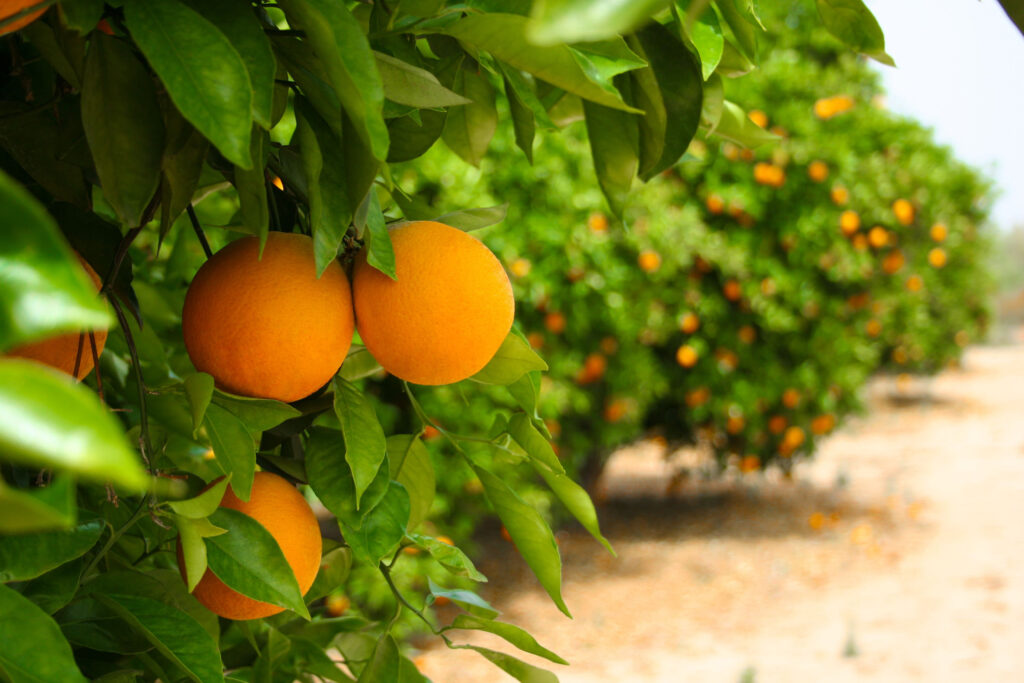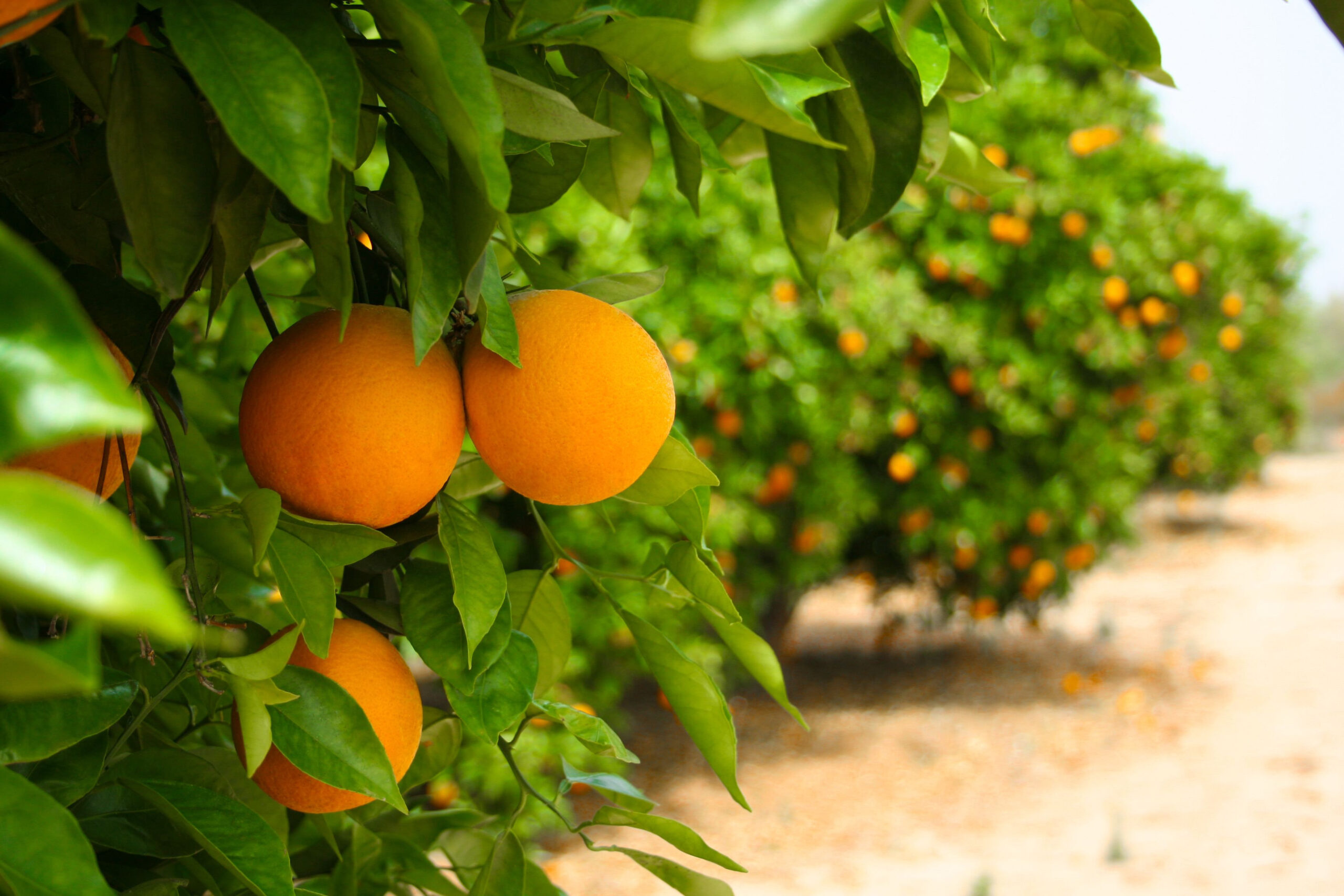Citrus: A Venture for the Brave

Green orange tree, lots of fruits

Eenie, meenie, miney, moe, look at all those citrus trees. Which one should I buy?
What Florida gardener wouldn’t desire to have a citrus tree in their yard? I bet most new gardeners who know anything about Florida’s legendary citrus industry are tempted to give this beautiful evergreen a try.
Well, ahem….
It can be done, but things aren’t quite the same as the old days. Success is rare. Take the case of Linda Burke’s 15-foot tree, north of Ocala.
To maintain the 20-year-old blood-navel, Burke says, “I use a citrus-mango fertilizer once a year from a local store. It does great, though you’re really supposed to fertilize about three times a year. I also rake up all the dropped fruit and leave that underneath as a natural fertilizer.”
Burke’s tree yields about three bushels of fruit a year. I hope she has many more years of success—and no diseases or freezing.
Fifty years ago, the sight of those deep-green citrus trees was common in Florida back yards. Springtime brought us the fragrant blossoms, the pollen, and the bees. Fall brought out the heavy, wooden orange crates that took up space on kitchen floors, overflowing with oranges, tangerines, and grapefruits. Tanks of concentrated frozen juice rumbled north over the rails while citrus-shipping enterprises dotted the highways. And did I mention that gold-labeled orange blossom perfume that every gift shop sold and that nearly blew the olfactory works out of our heads? Florida boasted a booming citrus industry.
But two vicious enemies have nearly destroyed that dream. Periodically, subfreezing temperatures assaulted it. In 1835, a bitter freeze took its toll and wiped-out the trees of the early pioneers. Brave souls replanted and kept going. During the Great Freeze of 1894 through 1895, frigid weather popped back when low temperatures struck twice within a few weeks of each other. It blackened the fruit and split open the moisture-filled tree trunks with loud pops that sounded like gunshots. All was lost.
But brave, risk-taking planters gambled again and built back the industry, doing all they could to battle the occasional—but serious—drops in temperature. Success prevailed until 1977 when the temperatures plummeted. They dove again, one freeze after another, in the 1980s. For many, it was over. But not quite all.
We arrived in 2005, only to discover a new, more sinister enemy with no connection to the weather. This devilish disease, known as citrus greening, has no cure.
According to the University of Florida’s Institute of Food and Agricultural Sciences website, “Huanglongbing (also known as HLB or citrus greening) is a disease affecting citrus production all over the globe. Citrus greening affects all citrus cultivars and causes tree decline, a serious threat to Florida’s citrus industry. The disease is believed to be caused by the bacterium Candidatus Liberibacter asiaticus. The Asian citrus psyllid transmits the bacterium and is found throughout Florida.”
This is especially painful when a family’s heirloom tree has been around for some time. The symptoms sneak up and develop gradually. You may even spot a few (see link below). Observe for leaf distortion (curling and notching), irregular, mottled-yellow and green patterns on leaves, yellow shoots in contrast to an otherwise green background canopy, dieback of shoots or limbs, lopsided, asymmetric fruit, undersized fruit that doesn’t ripen normally, bitter, off-flavored fruit when it should be ripe, and small, dark, malformed seeds. If you think your tree might have citrus greening, contact the plant clinic volunteers at the local ag office (see contact information below). Please accept my sincere sympathy, but dry your tears, and keep reading for a bit of hope.
Regarding large, heirloom trees, Troy Harbison, of Harbison Farms in Sparr, tells of his own successes. Trees at his place range from 15-20 feet high and average 15-years-old. He has practiced experimental techniques of drilling into the tree and “injecting penicillin mixed with LA200,” cattle antibiotics, which maintained the health of his trees.
Harbison told of experiments performed in South Florida: Farmers drove through their groves and sand-blasted off the waxy finish of the leaves; then, they sprayed the groves with antibiotics.
They enjoyed success, “but this was very expensive.”
This desire to overcome the crippling effect of citrus greening is widespread. According to Harbison, the antibiotic treatment he uses must be repeated every year— a job which is not so practical for a huge grove.
“As soon as one notices symptoms,” he said, “they should doctor the tree as soon as they can. The bigger the trunk, the better.”
He has recently planted some younger trees, but the mechanics of drilling into their tiny trunks are damaging.
“A tree should be at least three inches across,” he says.
Harbison has valencias, navels, grapefruits, hammonds, mangerines, calamondins, and kumquats, but cannot go out and treat another person’s trees. However, if they visit him at his fruit and vegetable market (see information below), he is more than happy to talk about the treatment.
When I told him I’d heard of groves with very little citrus greening by a stand of mossy oaks near Palatka a few years ago, Harbison nodded.
“Citrus trees planted under shade don’t get the disease as fast as in the sun. The life expectancy is longer.”
In fact, the trees I saw on his property were near old oaks.
So, as you can see, all is not lost. Scientists continue to seek a solution that is workable for farmers. What a boon it would be for Florida to see its citrus industry restored.
As for me, I’ve tried citrus and failed, but I’ll try again and again. I’ll not give up. I’ve heard through the grapevine that sour oranges, calamondins, lemons, limes, and other sour varieties are less susceptible. So, I’ll stick with those.
And when I say my prayers, I will include one for a solution to this terrible disease. For now, though, each one will have to make up their own mind, as the growing of citrus remains a venture for the brave.





